Virginia Creeper is a climbing or trailing flowering vine considered an aggressive grower. It starts with lush green leaves and blackberries in the summer and turns to a lively orange or burgundy color in the fall. It is often an ornamental plant since it quickly spreads over retaining walls and trees.
However, Virginia Creeper is not a perfect plant and has its fair share of problems. So you might be wondering why your creeper is dying. Don't worry; we have thoroughly researched the answer for you!
Typically, your Virginia Creeper is dying mainly from insect infestations. Various types of insects can cause problems.
Additionally, it can also have issues with underwatering or overwatering.
This leads to other questions such as, how much should I water Virginia Creeper? Or, how do I prevent insect infestation? And even, what kind of soil does Virginia Creeper prefer?
Keep reading for the answers to these questions and more!
![a kind of insects named aphid on the green plant, Why Is My Virginia Creeper Dying? [And What To Do]](https://gardentabs.com/wp-content/uploads/2023/05/Why-Is-My-Virginia-Creeper-Dying-And-What-To-Do.png)
Why Is My Virginia Creeper Dying?
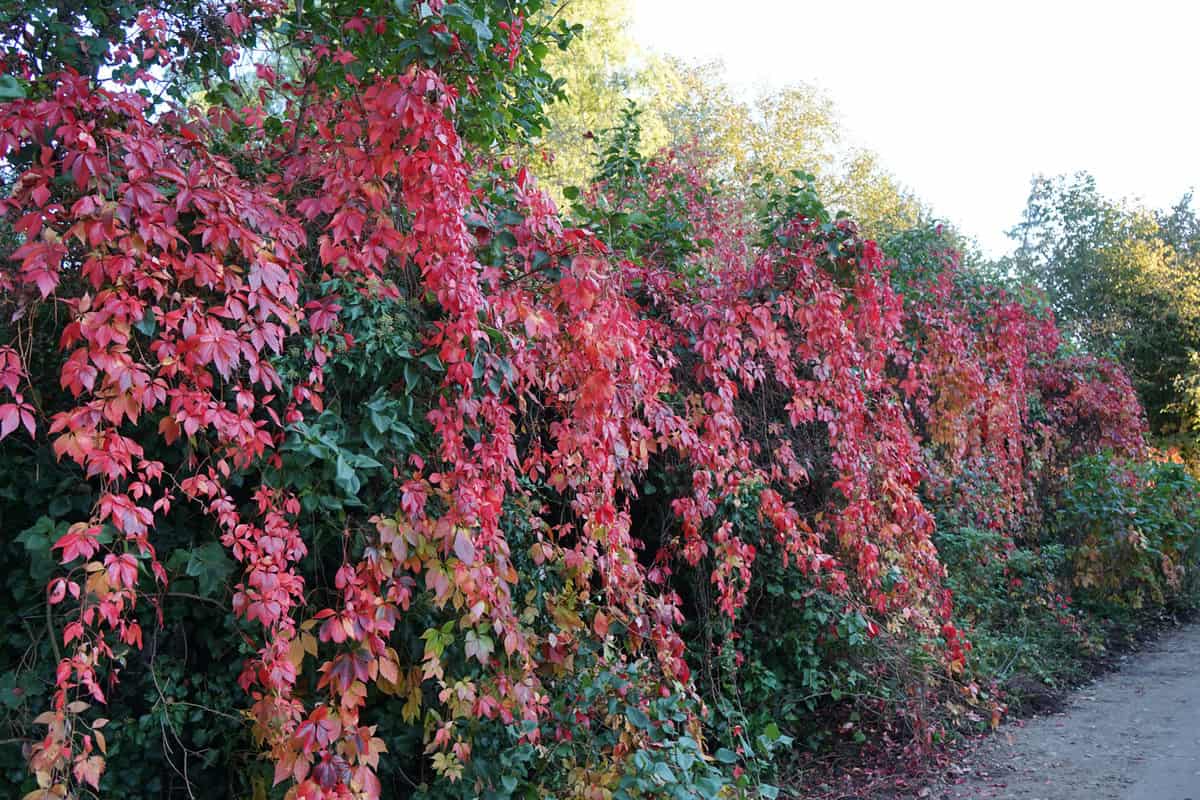
As established, Virginia Creeper usually suffers from watering issues or insect infestation. But, good news! There are some easy tips and tricks to remedy this issue. Let's go over each problem in detail.
Under Watering
With Virginia Creeper, watering is vital to the plant's overall health. Ensure to water deeply and thoroughly, but only when the soil is dry.
The key here is knowing when to water and how much to water.
The best thing to do is water the plant once per week by soaking it to a depth of 6 inches. Then, allow the soil to dry and water again thoroughly. This is especially important during dry, hot summers.
Insect Infestation
Unfortunately, Virginia Creeper can suffer from multiple insect infestations. Aphids, caterpillars, leafcutting bees, flea beetles, leafhoppers, scale, and weevil are troublesome insects for your creeper.
Let's review each one and what to do if you find yourself in this situation:
Aphids
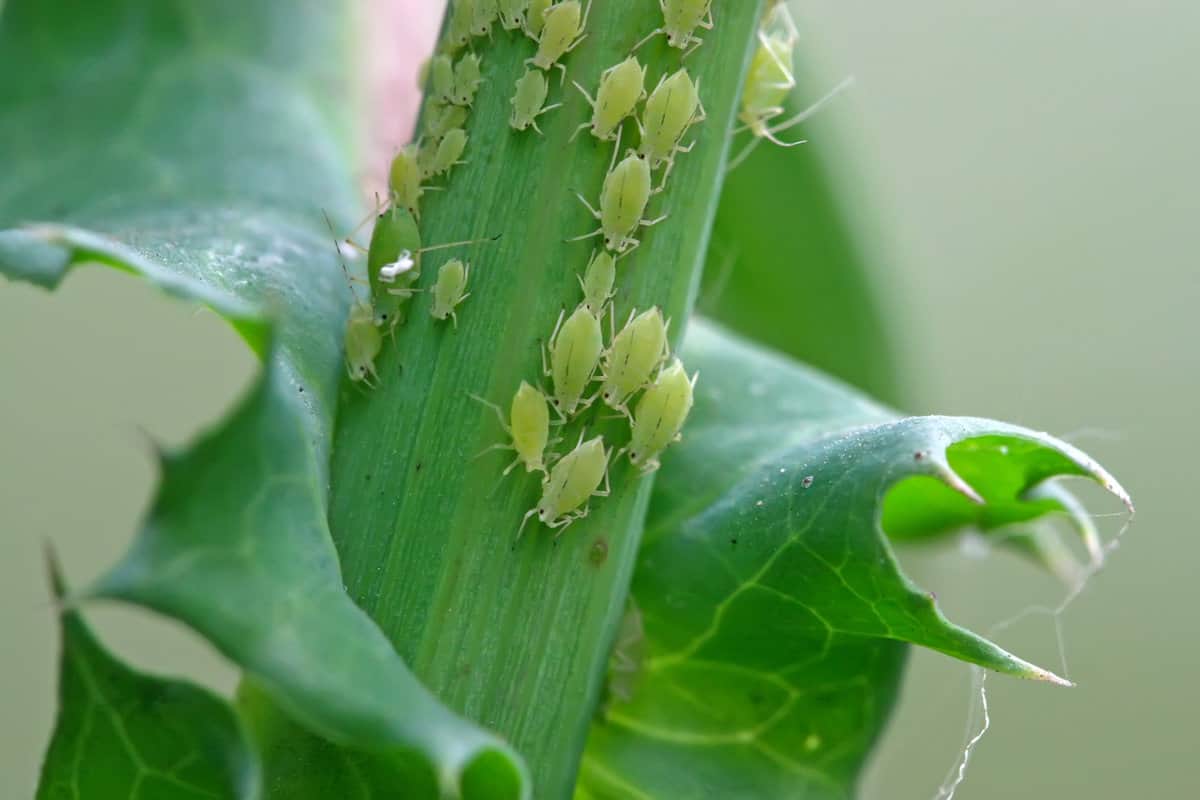
Often, aphids are repeat offenders that come back year after year. In reality, it can take up to 3 growing seasons with treatment for them to fully disappear.
The best way to get rid of these pesky boogers is with pesticides that target aphids. Treat your creeper in early spring and repeat when new growth appears.
Repeat this every year after year until no more aphids appear.
You can easily spot an aphid infestation. If your leaves are curling and turning yellow or you see tiny, gray to green insects, that's a good indication you have aphids on your hands.


Click here to see this pesticide on Amazon.
Caterpillars
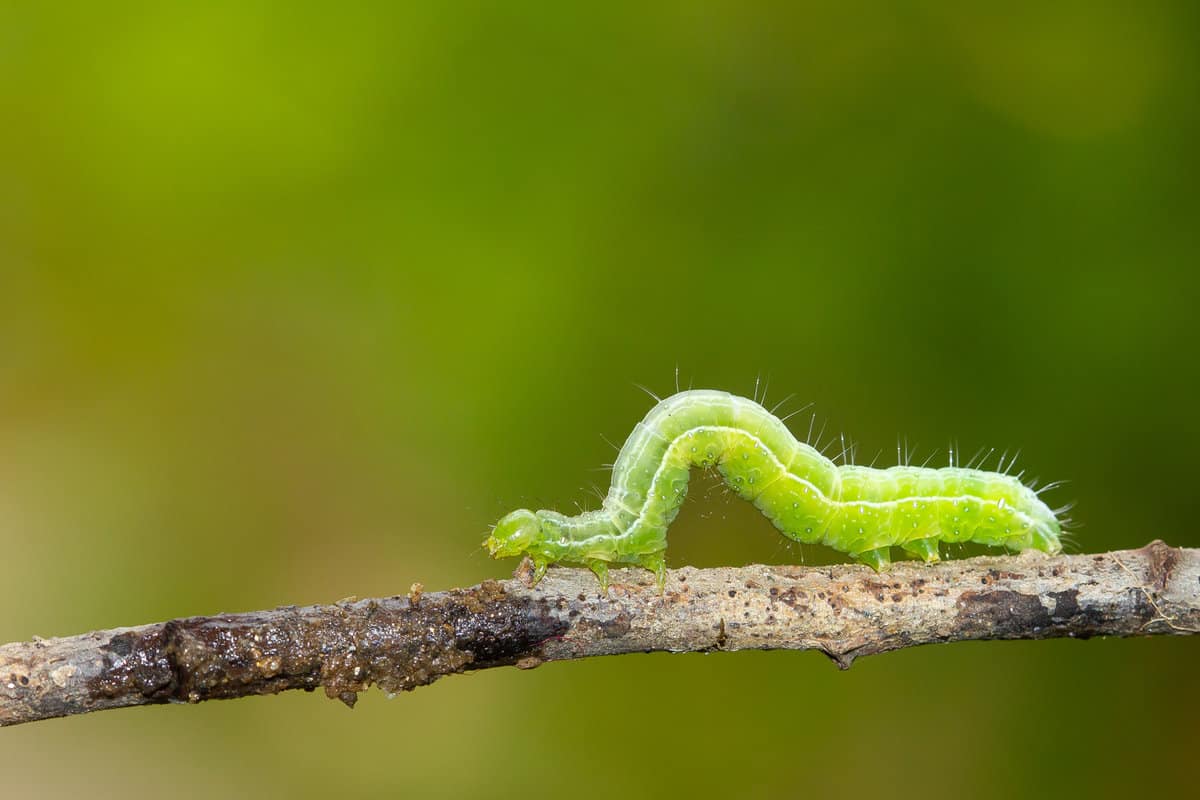
Caterpillars love to eat Virginia Creepers' leaves. Sometimes they are hard to spot because they hide in the dense foliage of the creeper.
You will notice defoliation and a widespread loss of leaves with caterpillar infestation.
Throw them in a bucket of soap water to get rid of the little critters. Or, you can spray them with an insecticide called 'Bacillus thuringiensis.'


See this caterpillar insecticide on Amazon.
Leafcutting Bees
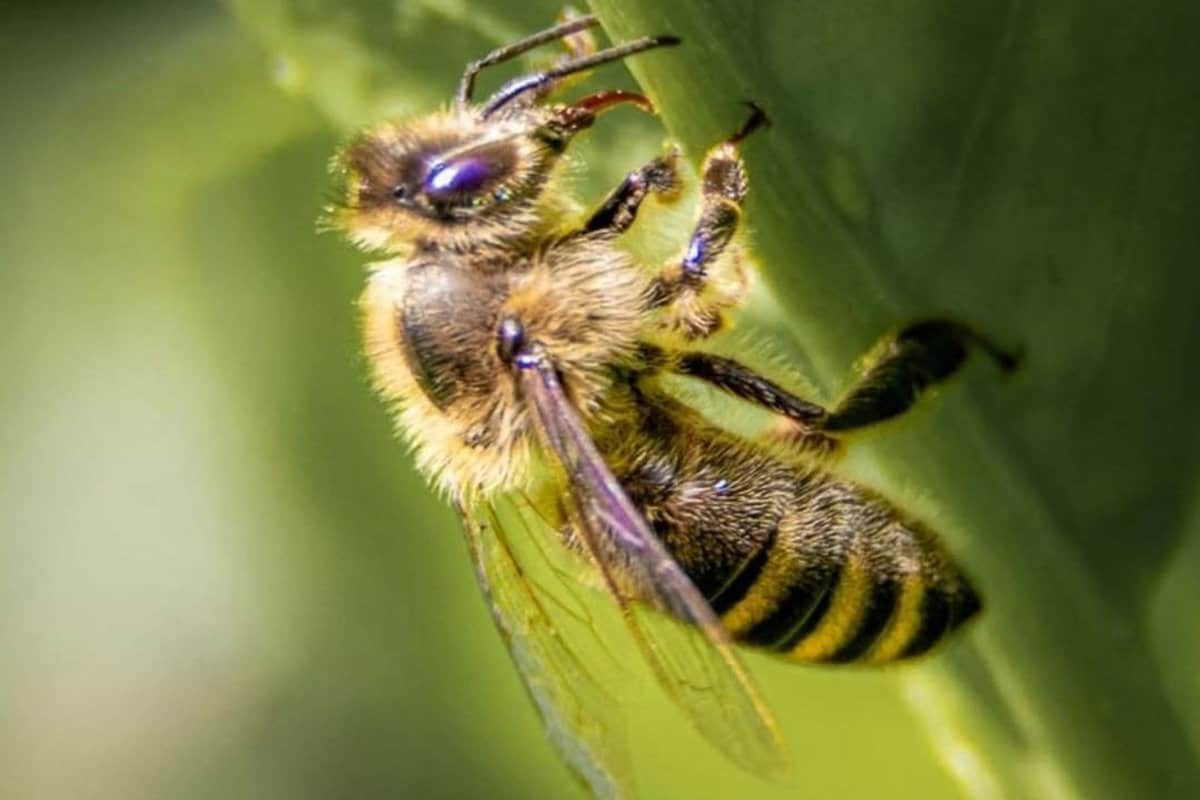
Leafcutting bees are not the average bee you think of as a helpful pollinator. These bees make little circles in the leaves, which serve as nests.
Leafcutting bees can make quite a fuss and cause a lot of damage to the plants.
To fix this, you can drape the leaves with cheesecloth to deter the bees. Any old cheesecloth will do.


Click here to see this cheesecloth on Amazon.
Flea Beetles
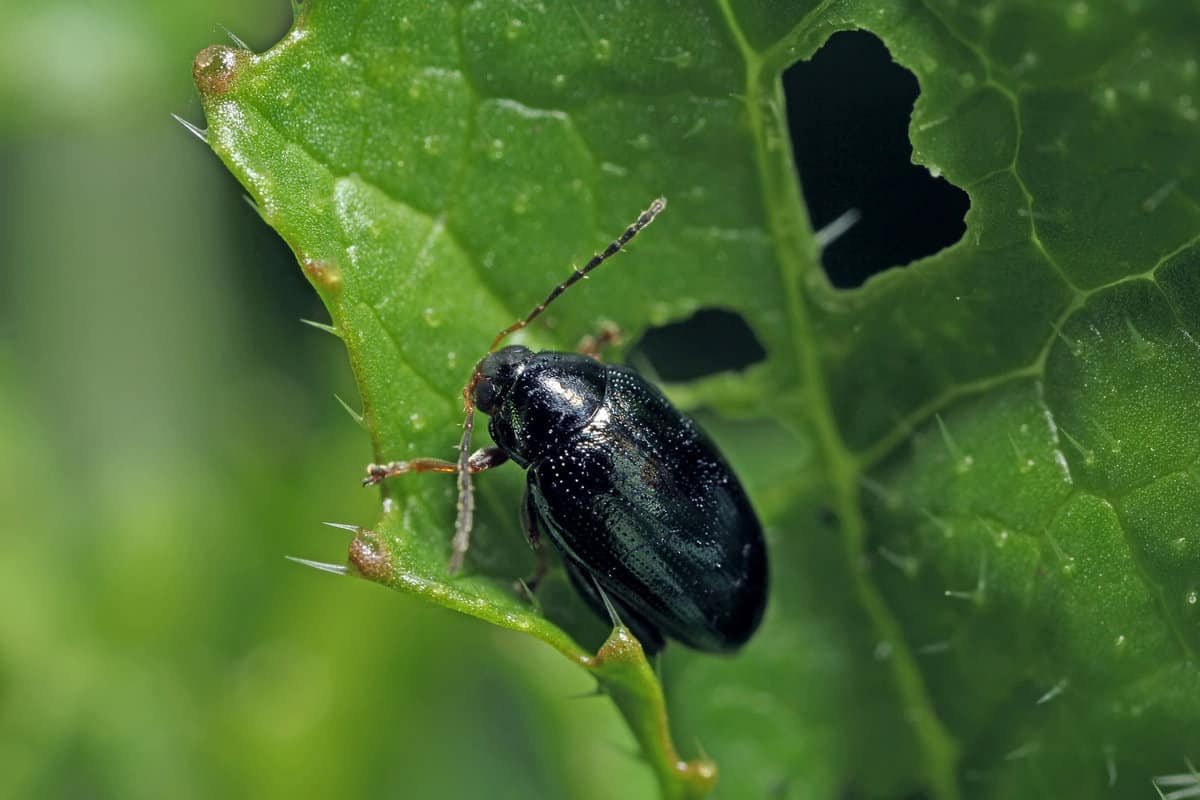
Adult flea beetles feed on the buds of Virginia Creeper. They are green, blue, or purple metallic in color and have long legs that can jump high.
If you see tiny, circular holes in the leaves, then flea beetles might be your problem. You can get rid of flea beetles by using liquid carbaryl found at your local home improvement store.
Leafhoppers
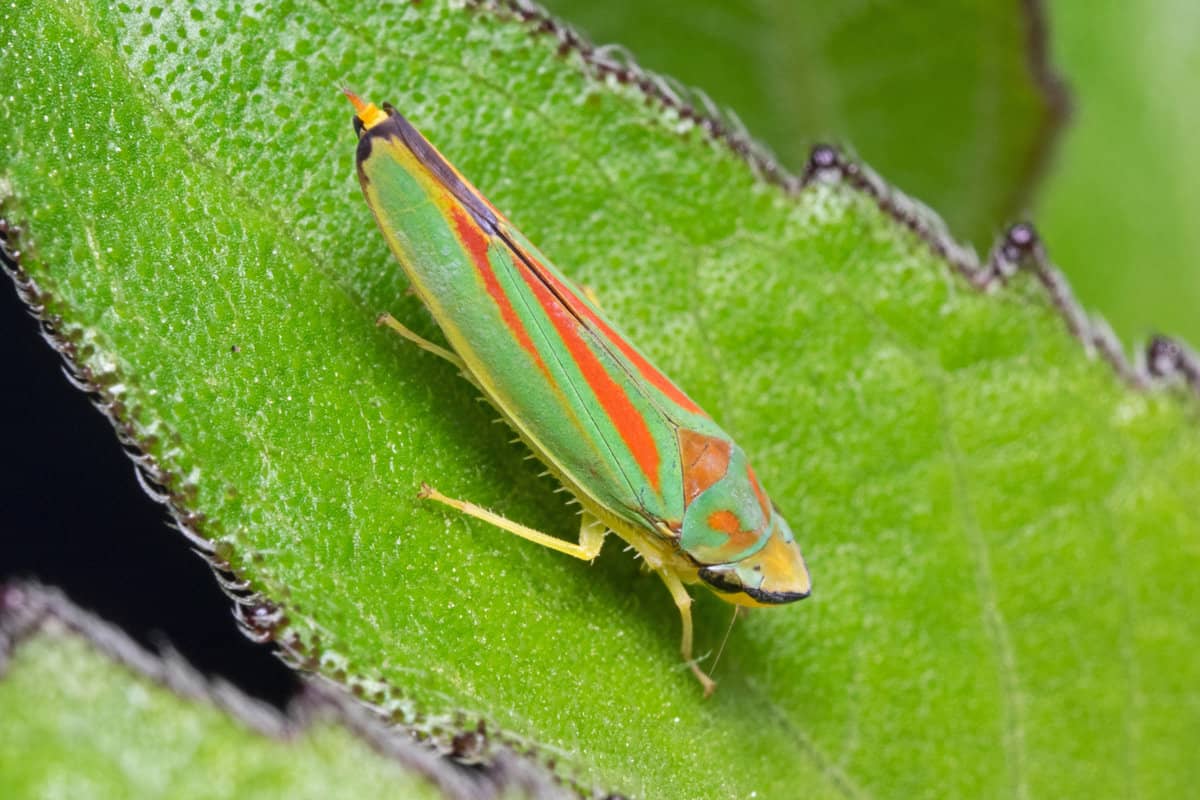
Leafhoppers are fast-moving insects and come in various hues. This is because they can adapt to the color of the plant they are feeding on.
If not caught early enough, leafhoppers can cause extreme damage to the stems and cause the plant to die. The best way to get rid of hoppers is by spraying them with insecticidal soap.
Scale Bug

The scale bug is highly attracted to Virginia Creeper. You will notice that they attack the underside of the leaves or stems. Often, they are mistaken for fungus because they are immobile and have a waxy shell.
There are multiple things you can do to get rid of scale bugs. The options are using an insecticidal soap, spraying with neem oil, treating with rubbing alcohol or spraying with horticultural oil.
We recommend treating the plant with rubbing alcohol and then spraying it with horticultural oil for twice the effectiveness.
Weevil
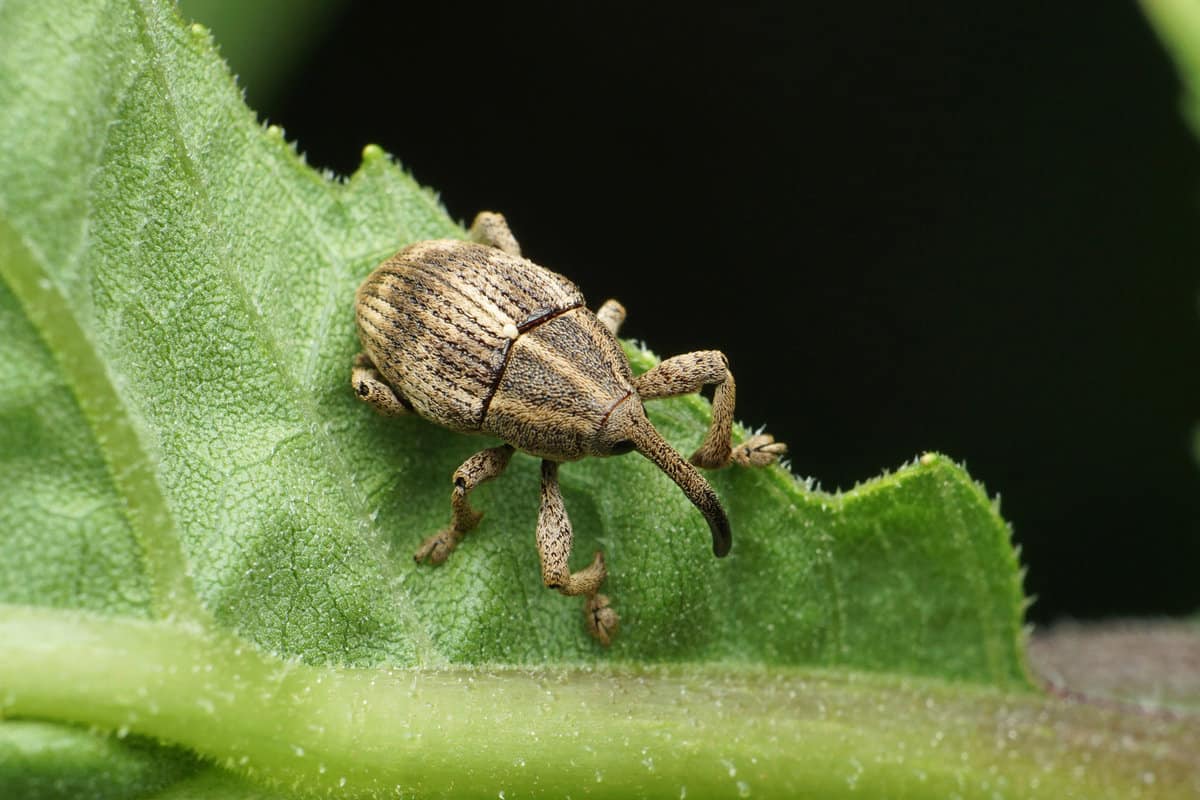
Weevils look like brown, black, or gray beetles with elongated noses. The adult weevils chew on leaves and leave large gashes in them.
On the other hand, the larvae chew on the roots and destroy the root system. This can be dangerous for the plant if left untreated.
Since weevils are active at night, handpick them off and treat the soil with parasitic nematodes.
How Do You Take Care Of A Virginia Creeper?
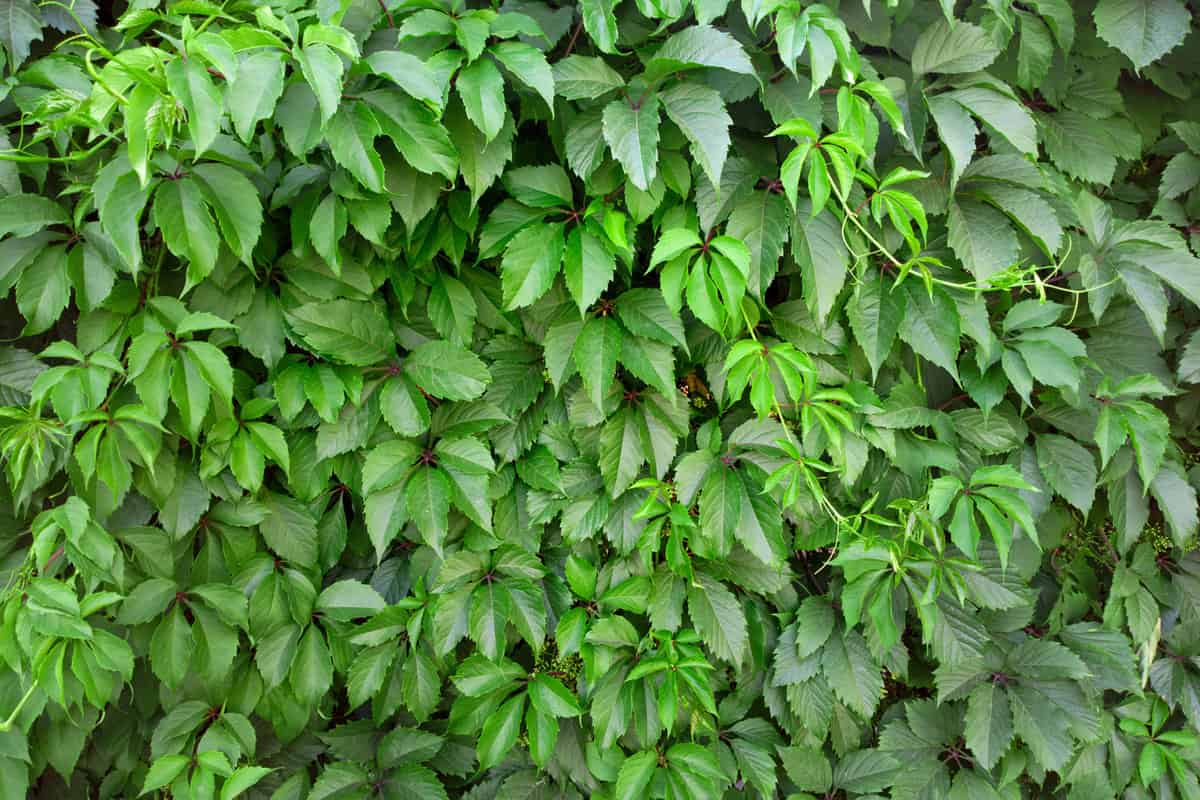
Virginia Creeper is a hardy and fast-growing vine. It has been invasive and chokes out other plants, even trees. Even so, they still need some TLC.
Water
We know that Virginia Creeper can be finicky regarding watering care. During its first one to two seasons, it needs a good soak every week until it's fully established.
Once it is settled, you won't have to water as often and only when the soil is dry.
Sun
Virginia Creeper is not too picky about light requirements. It can go for either full sun or partial shade. It is suggested to put it on an east or west-facing wall, so it gets a little of both.
Soil
Moist, well-drained soil is preferred. Sandy, clay, or loamy soil are all well tolerated. It does well in a range of acidity or alkalinity, anywhere from 5.1-7.5.
Can Virginia Creeper Cause Damage?
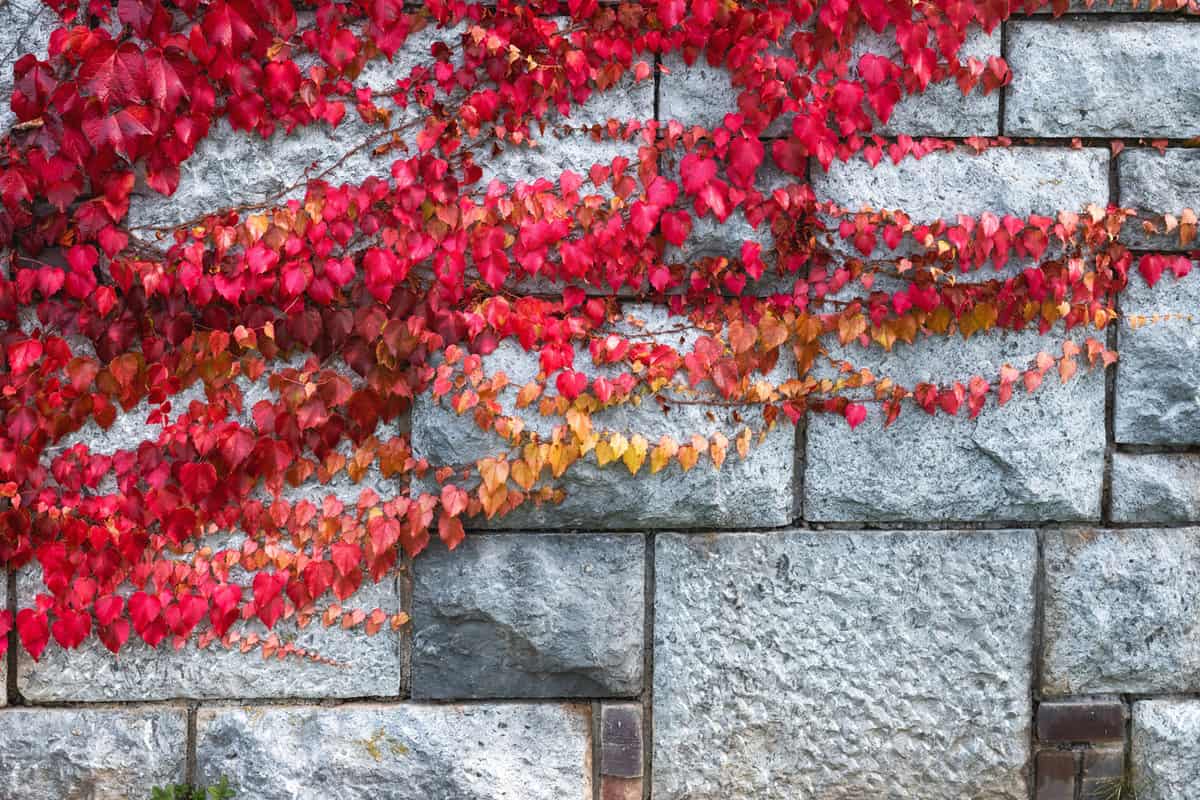
As long as there are no cracks or crevices where the creeper could get in, then don't worry. However, it could damage shingles and bricks depending on the cracks or crevices they can crawl into.
Avoid planting Virginia Creeper next to your home as it could cause damage to your siding.
Does Virginia Creeper Need Support?
If you don't want your creeper to be a groundcover, install a trellis or place it next to a fence or wall. This is especially important in the first two years until the plant grows suckers and becomes self-sufficient.
Does Virginia Creeper Need To Be Pruned?
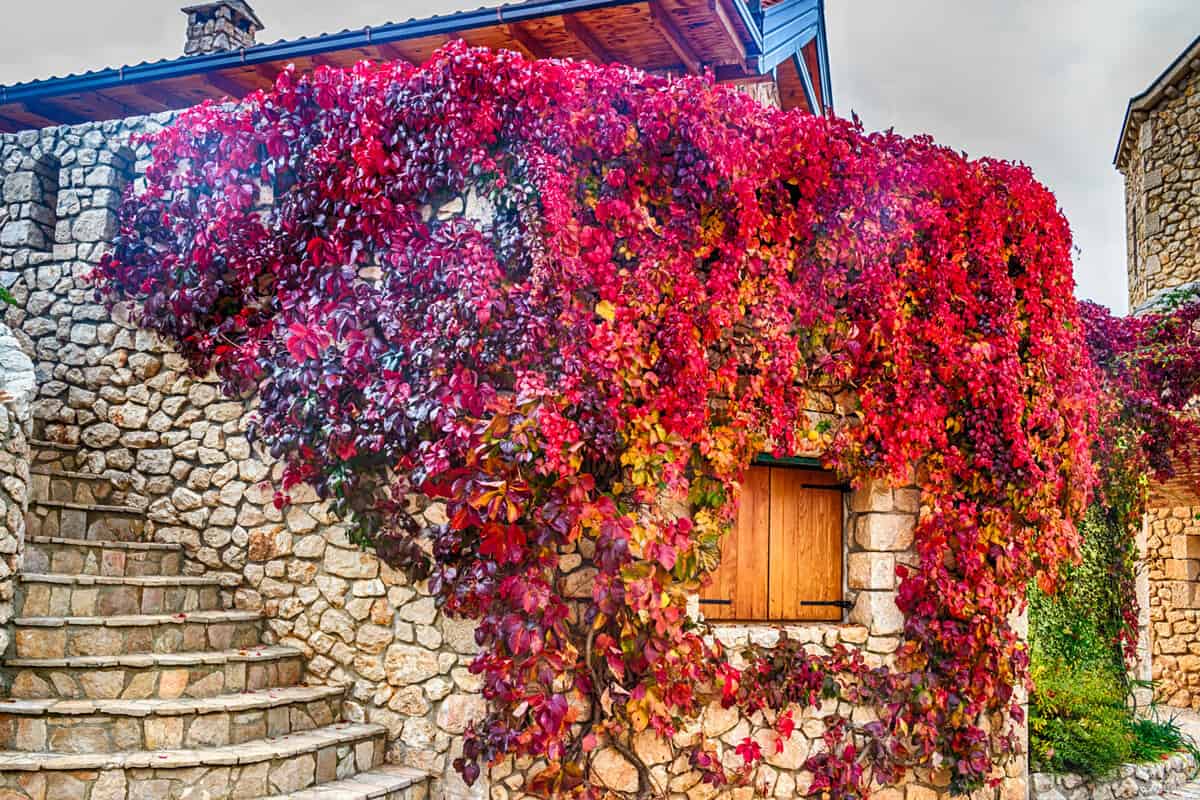
Virginia Creeper can be pruned early and often. Don't be shy with these aggressive vines. Because they are fast growing and can cause damage then, pruning is necessary.
Is Virginia Creeper Poisonous?
Although birds can enjoy eating the berries of the Virginia Creeper, it is toxic to humans. They contain amounts of oxalic acid.
Don't leave little ones unattended. It is also recommended to wear gloves when handling the plant.
When Is The Best Time To Plant Virginia Creeper?
Virginia Creeper, like Bostin Ivy, is best planted in the spring or fall. This is typical of most perennials.
Planting in cooler weather is always the best option to allow the plant to take root before extreme weather sets in.
How Fast Can Virginia Creeper Grow?
This vine has been known to grow 3o-50 feet in one growing season! Due to its fast-growing nature, don't plant them near delicate plants that could easily get overrun.
Conclusion
![Parthenocissus quinquefolia, known as Virginia creeper, Victoria creeper, five-leaved ivy, or five-finger, is a species of flowering plant in the grape family, Vitaceae. Berlin, Germany - Why Is My Virginia Creeper Dying [And What To Do]](https://gardentabs.com/wp-content/uploads/2022/08/Parthenocissus-quinquefolia-known-as-Virginia-creeper-Victoria-creeper-five-leaved-ivy-or-five-finger-is-a-species-of-flowering.png)
Even though Virginia Creeper can have multiple insect infestations, most of them are easily remedied. For watering issues, adjust when necessary, and you should see your creeper spring back to life.
Made it to the end? Check out these helpful articles:
How Much Does It Cost To Make A Vertical Garden?

![Why Is My Virginia Creeper Dying? [And What To Do]](https://gardentabs.com/wp-content/uploads/2023/05/Why-Is-My-Virginia-Creeper-Dying-And-What-To-Do-1-1.png)
![Why Is My Virginia Creeper Dying? [And What To Do]](https://gardentabs.com/wp-content/uploads/2023/05/Why-Is-My-Virginia-Creeper-Dying-And-What-To-Do-2.png)
Why anyone would want this horrible plant, is beyond me. Somehow we became infected with this “creature”. Over took my small deck almost covering it up. It grew on the house, yard, in my roses and I had no idea what is was. Last year in late fall it was dug up and removed, but it is back!! We are going to use Roundup and see is that helps. How does this plant travel as I had never seen or heard of it. We have kudzu here is SC, but I think this creeper beats it.